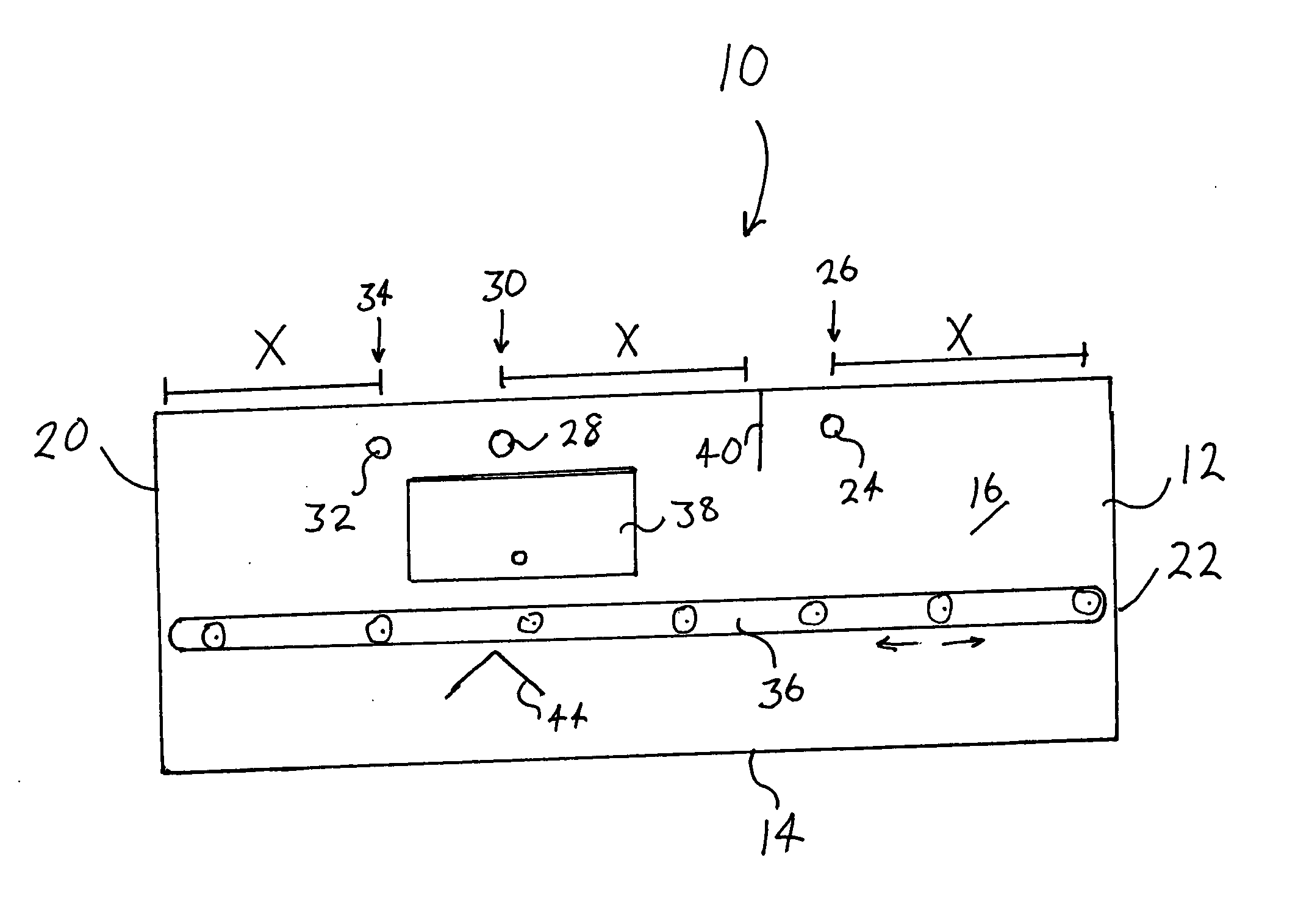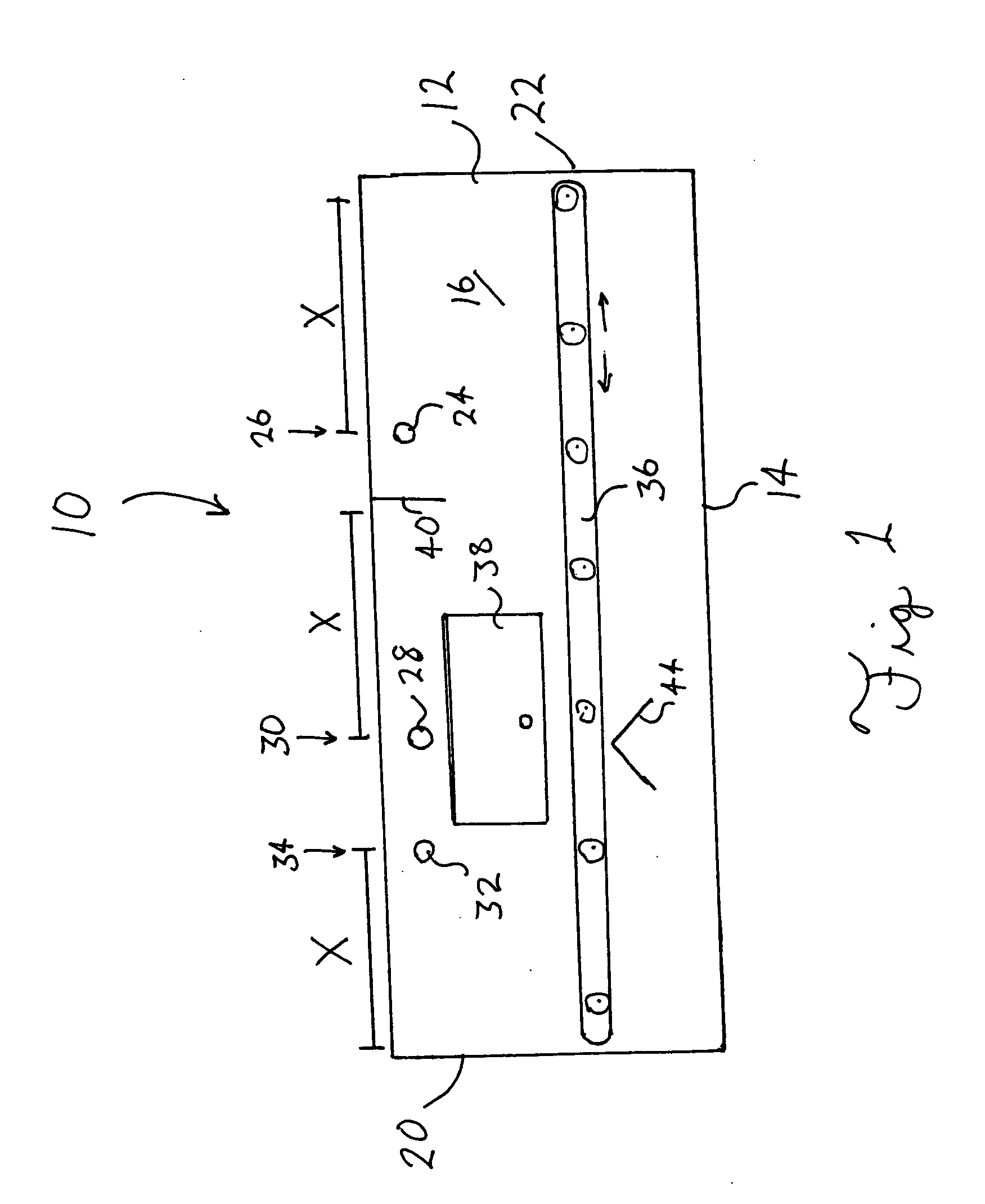Apparatus and method for cleaning printed circuit boards
a printed circuit board and cleaning apparatus technology, applied in the field of electronic manufacturing processes, can solve the problems of consuming valuable manufacturing time, circuit board cleaning equipment itself is extremely expensive, and the cleaning of printed circuit boards in such a context is as expensive as it is important, so as to reduce the time consumed by the drying phase portion and optimize the drying
- Summary
- Abstract
- Description
- Claims
- Application Information
AI Technical Summary
Benefits of technology
Problems solved by technology
Method used
Image
Examples
Embodiment Construction
[0021] Referring to FIG. 1, the circuit board cleaning system of the present invention is depicted (somewhat schematically) in general by the reference number 10. System 10 includes an elongate enclosure 12 with a base or floor member 14, side walls 16 (only front side wall visible in drawing), a top or ceiling panel 18. For ease of description, the distal ends of enclosure 12 are (as if viewed from the front side) referred to as the left end (or first end) 20 and the right end (or second end) 22.
[0022] A washing nozzle assembly 24 resides at, and defines a first linear position 26 relative to the long axis of enclosure 12. A drying manifold 28 resides at, and defines a second linear position 30. A rinsing nozzle assembly 32 resides at, and defines a third linear position 34. Suitable designs for washing nozzle assembly 24 and rinsing nozzle assembly 32, as well as the associated pumps, conduits, valves, actuating systems, and distance from work piece parameters are well known in t...
PUM
| Property | Measurement | Unit |
|---|---|---|
| size | aaaaa | aaaaa |
| distance | aaaaa | aaaaa |
| distance | aaaaa | aaaaa |
Abstract
Description
Claims
Application Information
 Login to View More
Login to View More - R&D
- Intellectual Property
- Life Sciences
- Materials
- Tech Scout
- Unparalleled Data Quality
- Higher Quality Content
- 60% Fewer Hallucinations
Browse by: Latest US Patents, China's latest patents, Technical Efficacy Thesaurus, Application Domain, Technology Topic, Popular Technical Reports.
© 2025 PatSnap. All rights reserved.Legal|Privacy policy|Modern Slavery Act Transparency Statement|Sitemap|About US| Contact US: help@patsnap.com


